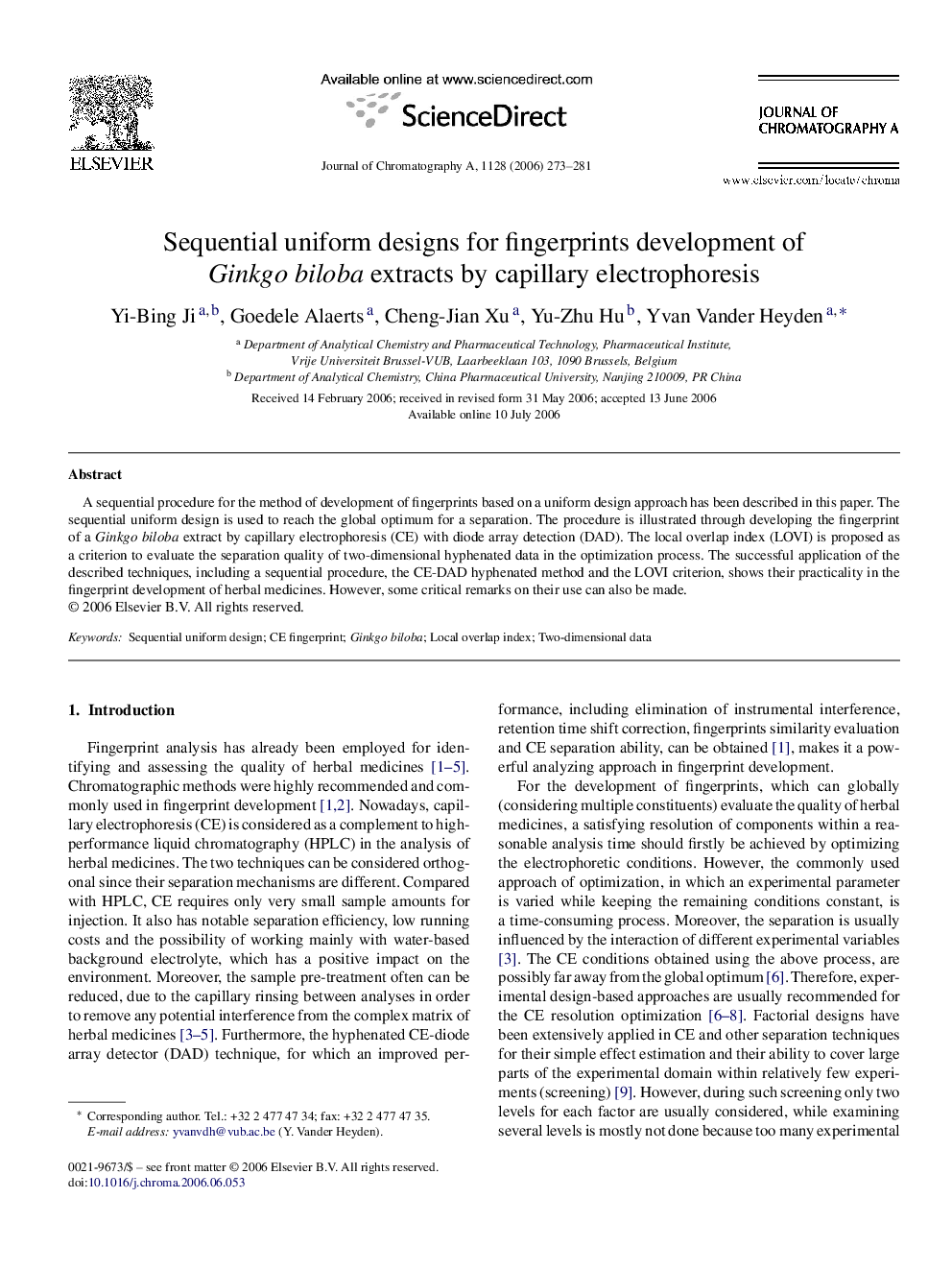| Article ID | Journal | Published Year | Pages | File Type |
|---|---|---|---|---|
| 1211461 | Journal of Chromatography A | 2006 | 9 Pages |
A sequential procedure for the method of development of fingerprints based on a uniform design approach has been described in this paper. The sequential uniform design is used to reach the global optimum for a separation. The procedure is illustrated through developing the fingerprint of a Ginkgo biloba extract by capillary electrophoresis (CE) with diode array detection (DAD). The local overlap index (LOVI) is proposed as a criterion to evaluate the separation quality of two-dimensional hyphenated data in the optimization process. The successful application of the described techniques, including a sequential procedure, the CE-DAD hyphenated method and the LOVI criterion, shows their practicality in the fingerprint development of herbal medicines. However, some critical remarks on their use can also be made.
